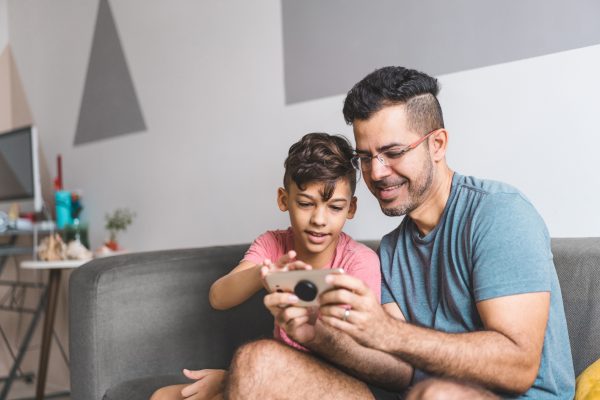 With so many social platforms popping up each year, it’s tough for parents to keep track of what’s what. So it’s no wonder TikTok has many of us scratching our heads over what this latest trend in social media is all about.
With so many social platforms popping up each year, it’s tough for parents to keep track of what’s what. So it’s no wonder TikTok has many of us scratching our heads over what this latest trend in social media is all about.
The social network for watching, making and sharing user-generated short videos — often people lip-syncing to a soundtrack of top music hits — has exploded in popularity in recent years. But, parents want to know is it appropriate for kids? How does it work? Is it safe?
Dr. Laura Markley, a child and adolescent psychiatrist and pediatrician at Akron Children’s, shares what parents need to know about this popular musical singing and sharing app.
Is TikTok appropriate for kids?
Dr. Markley does not recommend TikTok for kids under age 15. There are several videos that include swearing, sexual content and inappropriate subjects, such as self-harm, suicide and eating-disordered behaviors.
In fact, she advises parents to avoid social media in general for kids under 13. People of all ages are using social media, so kids can come across inappropriate content that they aren’t developmentally able to process.
Plus, younger kids don’t have a sense to maintain their privacy. Information embedded in metadata, such as a child’s home address, can be released in a single photo or video without the child even saying anything.
But if this isn’t possible and your child is chomping at the bit to participate in TikTok, Dr. Markley suggests parents open an account instead. In this way, parents can watch videos ahead of time and then share them with their children, instead of allowing kids to have their own account.
“Parents can be on the lookout for sneaky videos,” she said. “There can be inappropriate content embedded in a video that looks PG and it doesn’t become apparent until it’s too late.”

Dr. Markley believes the safest way for families to participate on TikTok is to refrain from posting videos themselves.
What parental controls should I initiate?
First and foremost, parents should set the account to private under the Privacy and Safety settings, as well as disable direct messaging. It’s a direct line for strangers and unsavory people to speak to your children. It also gives bullies access to them.
Dr. Markley also recommends the following parental controls:
- Set a maximum time limit for app use on your child’s phone.
- Turn off location services so personal information isn’t digitally imprinted on videos.
- Enable Restricted Mode to help filter inappropriate content.
- Set up the Family Safety Mode to sync your account with your children’s in order to manage their settings.
The good news is when kids aged 13 – 15 sign up for TikTok, their account is private by default, so only friends can view and interact with them. There also are settings for kids under age 13 that offer additional safety features. Just be sure your children have entered their actual ages.
How can we use TikTok together safely?
TikTok is chock full of videos for sparking creativity and learning new things. It’s great for cooking tutorials, learning new crafts or dances, watching cool tricks and other entertaining activities for a rainy day.
Dr. Markley agrees the safest way for families, especially those with school-age children, to participate is to refrain from posting their own videos.
“Parents can still watch videos with their children and do the dances,” she said. “They can even record home videos of it, but they don’t need to post the content.”
She warns creating a digital personality at a young age when many kids don’t have a filter can cause issues later on. Not to mention, when kids post, it opens them up to scrutiny from bullies, online predators and other dangers.
“Unfortunately in this day and age, you can’t let your guard down,” said Dr. Markley. “If your children are on TikTok or other social platforms, parents need to know what kids are putting out there and what they’re receiving in return.”
If you think your child is struggling significantly due to social media, call 330-543-5015 to schedule an appointment at Akron Children’s Lois and John Orr Family Behavioral Health Center. Virtual visits are available.










